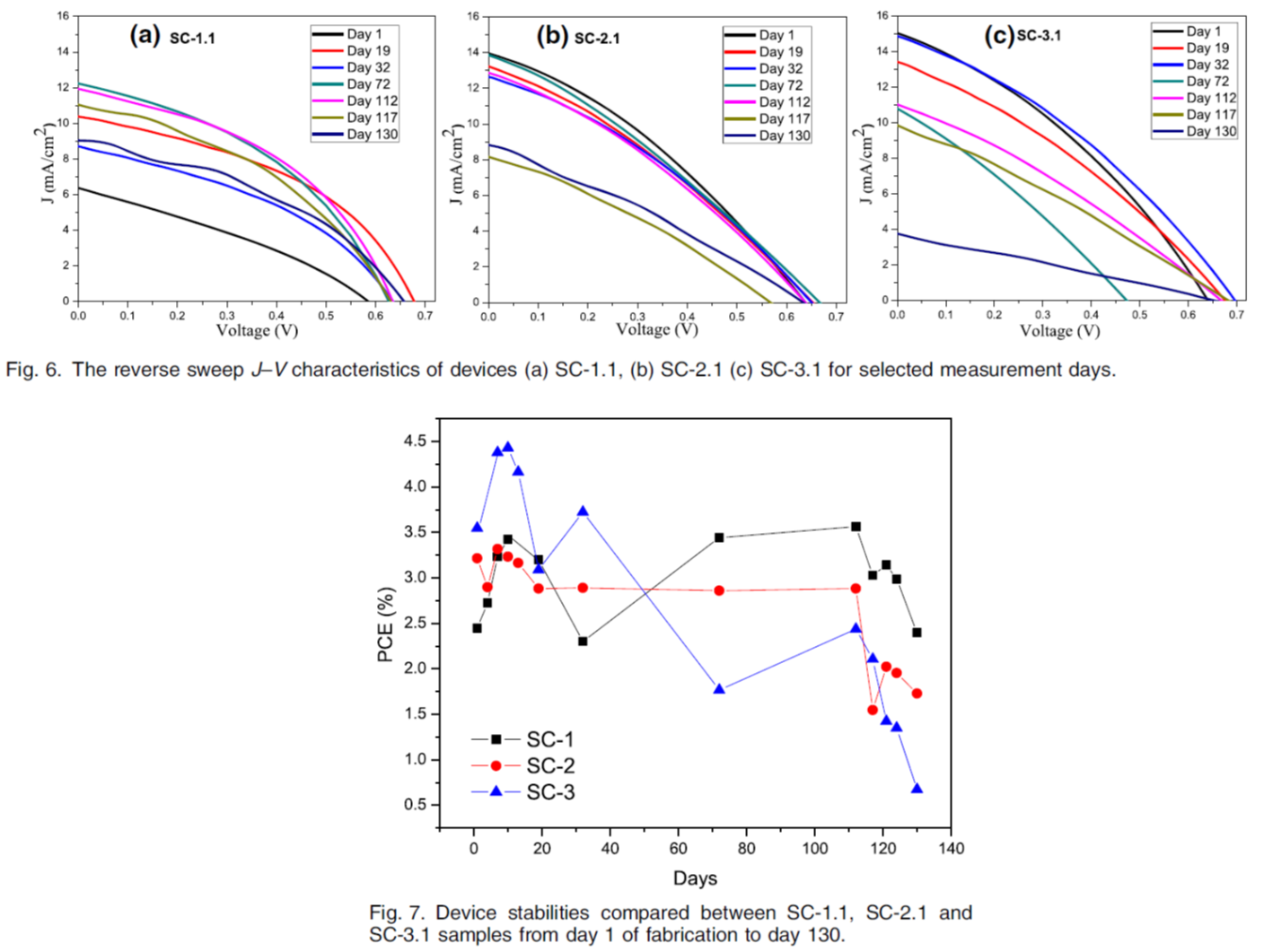Ambient Prepared Mesoporous Perovskite Solar Cells
with Longer Stability
Athira Makkaramkott, Rudra Mukherjee, Sushobhan Avasthi, Angappane Subramanian
Journal of Elec Materi (2021). https://doi.org/10.1007/s11664-020-08721-7
(Left) FESEM image of perovskite nanorods; (Right) J-V curve of solar cell.
The study carried out here is the ambient preparation of CH3NH3PbI3 (methylammonium lead iodide, MAPI)-based perovskite solar cells (PSCs) without a hole transport layer (HTL). The TiO2 electron transport layer (ETL) is deposited using three different methods, namely, chemical deposition, RF sputtering and e-beam evaporation, and the fabricated solar cell performances are compared. The common device structure is FTO/compact-TiO2/mesoporous-TiO2/MAPI/Au. The solar cell parameters are measured under standard AM 1.5 G light of intensity 1 sun. The e-beam-based PSCs attained a maximum power conversion efficiency of 3.54% among the 25 devices fabricated on a 1-in.2 substrate. Notably, it is found that 85% or above of the initial efficiency is retained for 20 days of storage in the dark indicating slow degradation of the studied solar cells. All the solar cell performances are monitored for 130 days during the storage. Remarkably, the RF-sputtered compact TiO2 layer-based PSCs have retained 99% of the initial average efficiency up to 112 days of storage.

